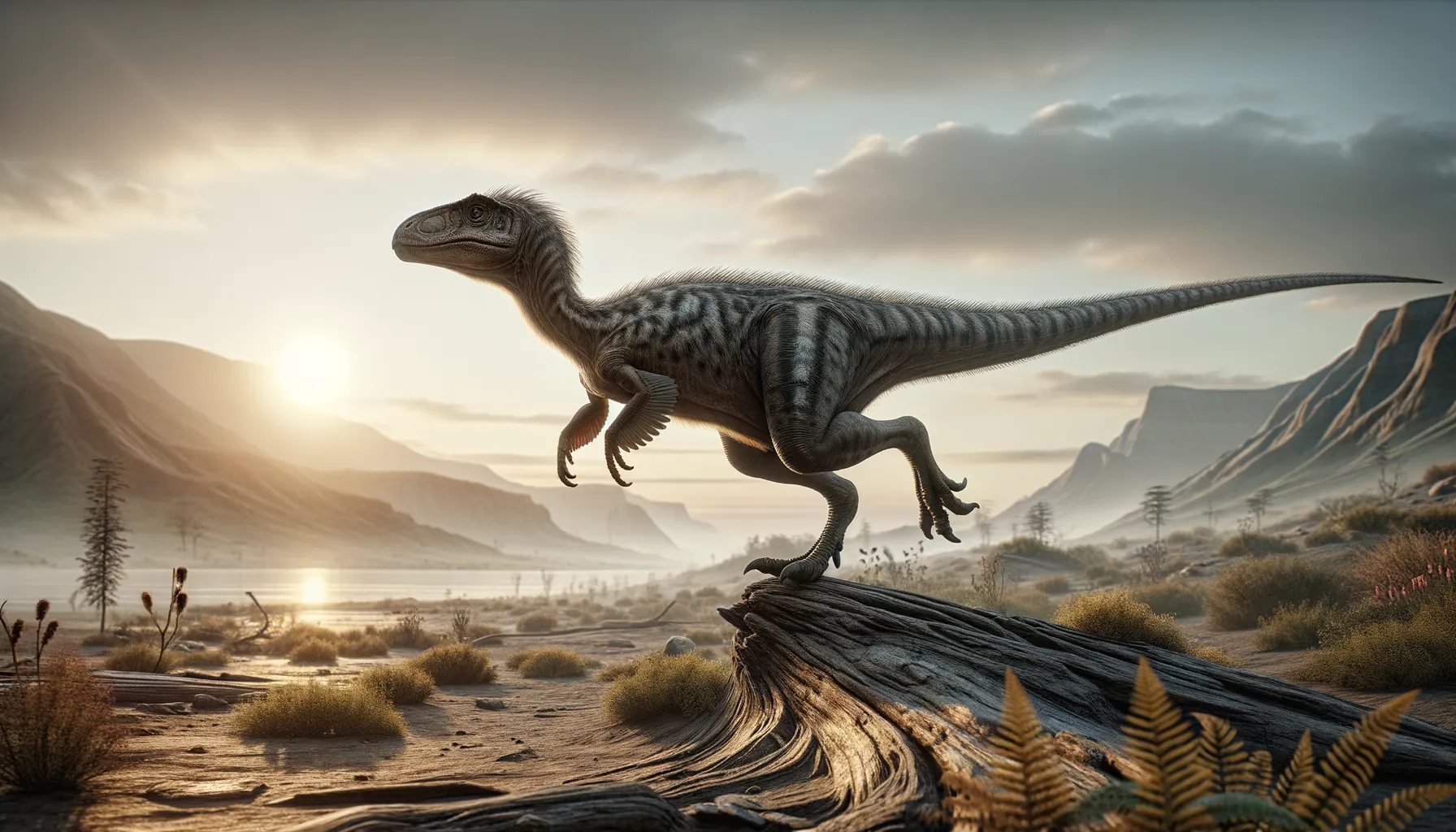
Agnosphitys
Quick-footed and ever so ancient!
Period
Triassic
Length
About 1 meter long.
Height
Roughly 60 centimeters tall.
Weight
Approximately 20 kilograms.
Agnosphitys was a small, early dinosaur that lived during the Late Triassic period, over 200 million years ago. Characterized by its bipedal stance and lightweight frame, it likely exhibited a bird-like agility. Fossil evidence of such dinosaurs provides insight into the evolution of theropods, and Agnosphitys in particular may represent a transitional form alongside other early dinosaurs. Surviving in what is now modern-day England, this dinosaur had to navigate a landscape of diverse flora and fauna.
Diet
Agnosphitys was likely an omnivore, feeding on small animals and plants. Its diet probably included insects and small vertebrates, as well as available vegetation.
Hunting
It probably hunted small prey using its speed and agility. Agnosphitys might have relied on ambush tactics, taking advantage of dense foliage for cover.
Environmental challenges
Living during the Late Triassic, Agnosphitys faced challenges such as fluctuating climates and competition for resources. As continents were in different configurations, environmental conditions varied greatly. Survival required adaptability to shifts between arid and humid climates. Predation from larger theropods and other beasts posed a constant threat.
Speed
Likely swift due to its small and agile build.
Lifespan
Estimated to reach around 10 to 20 years.
First discovery
Discovered in 1998 in Avon, England.
Fun Facts
- Agnosphitys is a dinosaur that lived approximately 210 million years ago during the Late Triassic period.
- The name 'Agnosphitys' means 'unknown begetter', highlighting how much we still have to learn about this dinosaur.
- Fossils of Agnosphitys were first discovered in the United Kingdom, showcasing that dinosaurs lived there long ago.
- Agnosphitys was a small, bipedal dinosaur, likely no larger than a medium-sized dog.
- It is believed that Agnosphitys was an early theropod, one of the groups that eventually evolved into modern birds.
- The diet of Agnosphitys is not fully known, but it may have been an omnivore, eating plants and small animals.
- Agnosphitys provides important clues to scientists studying the evolution and diversity of early dinosaurs.
Growth and Development
Agnosphitys likely followed a rapid growth pattern to reach maturity quickly. Fossil records suggest that some individuals may have reached full size in just a few years. This fast growth would have been crucial in ensuring survival against predators. Juveniles might have had distinct markings or colors to stay hidden from predators.
Habitat
Agnosphitys inhabited the wooded environments of what is now Europe. The landscape featured densely packed forests with abundant underbrush. This dinosaur likely preferred areas that provided both shelter and food sources, making use of its speed in open clearings and agility amidst trees. Seasonal changes in vegetation would have influenced its movements and habits.
Interaction with other species
As part of an early ecosystem teeming with diverse life forms, Agnosphitys interacted with various reptiles and early mammalian relatives. It may have competed with other small theropods for similar prey. Sympatric species might have included primitive crocodile-like reptiles and herbivorous pseudosuchians. These interactions shaped its behavior and evolutionary trajectory.
Natural lifespan
Individuals likely lived for around 10 to 20 years.
Reproduction
Reproductive strategy might have involved laying eggs in secluded spots to ensure offspring safety. Clutch sizes were probably small to moderate, mirroring modern birds' strategies. Nesting sites may have been constructed using available natural materials. Some parental care perhaps existed, as was common in many dinosaur species.
Social behaviour
Agnosphitys might have exhibited solitary or loose group social behavior. Scatter behavior could be observed with individuals coming together for special occasions such as mating. Social structures, if any, were likely non-complex given its size and lifestyle. Interactions with others were probably based on necessity rather than any advanced social interactions.
Fossil locations
Fossils of Agnosphitys have primarily been found in Avon, England. These remains have provided crucial insight into early dinosaur evolution. The discovery in Britain highlights the widespread distribution of dinosaurs even during early periods. Ongoing research may uncover more sites revealing additional information.
